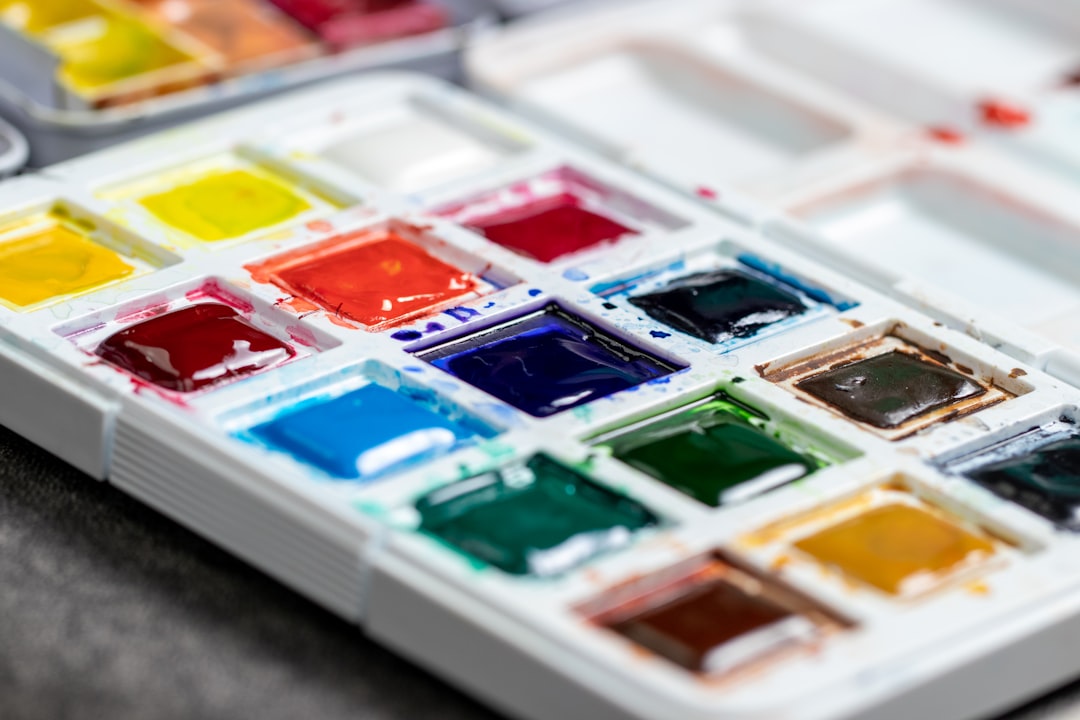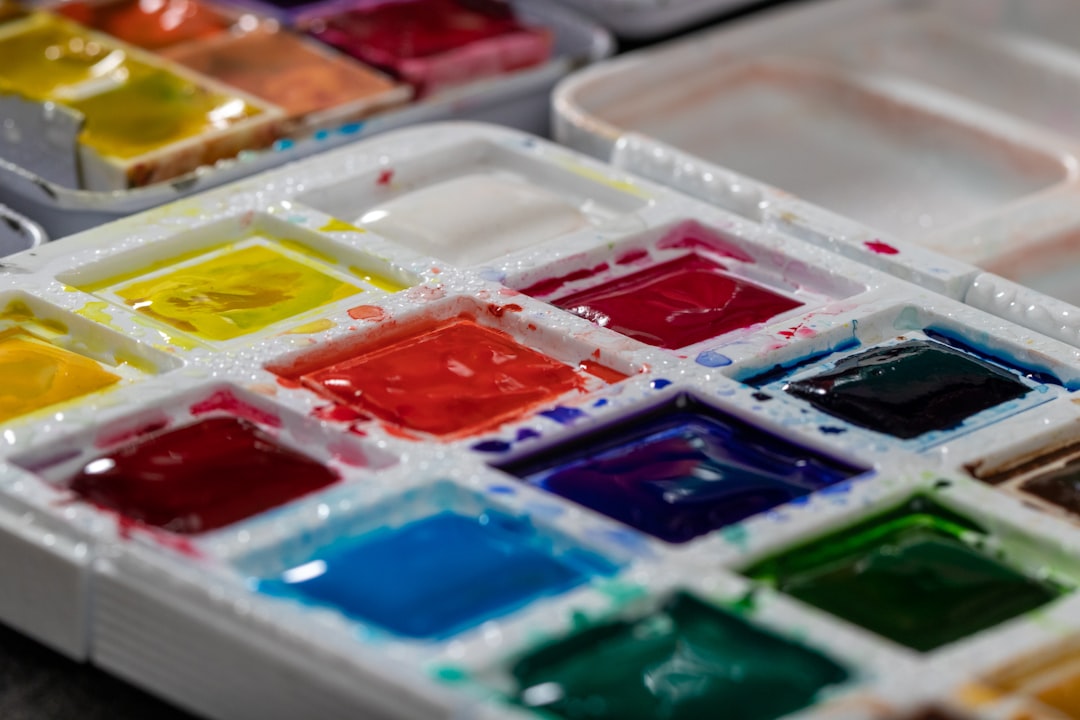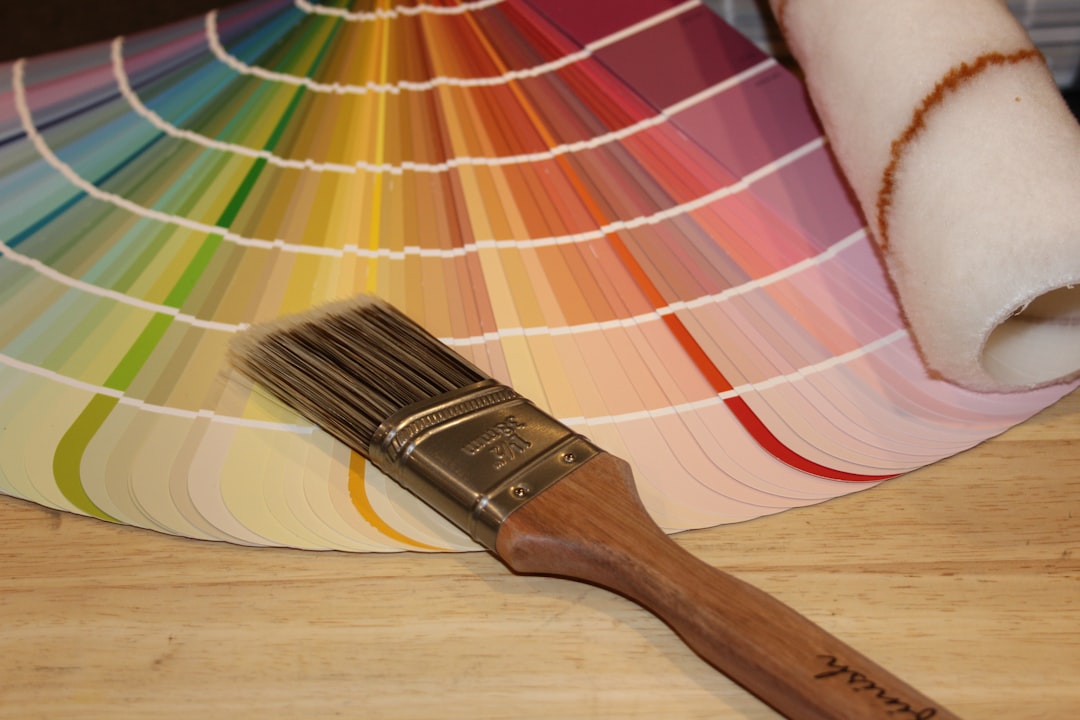

Engage prospects with a scan and streamline customer engagement with FREE QR code marketing tools by Sona – no strings attached!
Create a Free QR CodeFree consultation

No commitment

Engage prospects with a scan and streamline customer engagement with FREE QR code marketing tools by Sona – no strings attached!
Create a Free QR CodeFree consultation

No commitment
QR codes have transformed from a novelty into a strategic tool for connecting offline engagement with online action. For cabinet painting services businesses, these codes offer a simple and effective way to capture new leads, display completed projects, and guide homeowners from first interest straight to a scheduled consultation—eliminating the gaps and delays that let potential clients slip away.
As digital transformation changes how customers search for and interact with home improvement services, cabinet painting providers face more competition and rising customer expectations for convenience and transparency. Many businesses miss valuable prospects who notice a sign or flyers but never follow up because there is no easy, trackable way to convert curiosity into a qualified lead. Traditional marketing materials such as flyers, business cards, or word-of-mouth often cannot reveal who is engaging, offer little insight into ROI, and leave most interactions anonymous.
Strategically used QR codes instantly connect homeowners from physical touchpoints like signs or brochures to your digital portfolio, pre-filled quote forms, or real-time booking calendars, enabling immediate lead capture and attribution. This article explores how cabinet painting services can use QR codes to maximize conversions, automate follow-ups, and turn every interaction into a measurable opportunity, solving real-world challenges with missed leads and slow responses.

QR codes connect physical marketing with digital results, helping providers reach prospects who often show interest but never submit a form or call. Cabinet painting businesses frequently have trouble tracking which print or in-person contacts generate qualified leads, resulting in missed opportunities that are hard to diagnose or improve.
The key is to replace friction-heavy analog processes with immediate, mobile-friendly digital actions. Printed brochures become scannable galleries with project filters and finish guides. Paper estimate forms become mobile forms that pre-fill based on job type and route to the right estimator. Manual sign-up sheets at home shows become automated lead capture with consent and instant follow-up. Each scan is a measurable micro-conversion that pushes the lead forward and reveals which assets actually work.
This approach automates prompt lead capture, reduces delays, and opens new opportunities for retargeting and nurturing. For example, a QR code on a showroom sign can take visitors to a curated set of before and after projects by cabinet style while your platform logs the scan, adds the contact to a finish-focused nurture sequence, and alerts your team when the visitor requests a quote. Tools like Sona QR support every step of this transformation, from code creation and dynamic routing to analytics and CRM sync.

Cabinet painting teams deal with unique offline-to-online challenges. You meet homeowners in physical spaces: kitchens, neighborhoods, home shows, and showrooms. Without a clean digital bridge, interest fades and attribution gets lost.
QR codes solve major marketing gaps for this vertical in ways that are practical and cost effective:
Applied to cabinet painting, this means you can put QR codes on appointment cards to confirm site visits, on invoices to request reviews, on van wraps to schedule a free consultation, and on sample boards to explore finishes. Each placement clarifies your next step for the homeowner and gives your team the data to double down on what works.

Cabinet painting companies can capture and qualify interest using several QR code formats, each aligned to a specific action and customer moment. Selecting the right format for the right touchpoint increases both engagement and measurability.
Dynamic QR codes amplify these formats by supporting rapid destination changes, scan tracking, and A/B tests. You can rotate seasonal offers, route scans by city, or run split tests between a gallery and a lead form, then keep the print piece in market while you optimize the digital experience through Sona QR.

Cabinet painting companies often lose leads at the edges of offline engagement: when someone likes what they see but has no easy way to act. Strategic QR placement reduces that risk and makes every in-person moment measurable.
Start by mapping your most frequent offline touchpoints, then convert each into a digital onramp with a clear value proposition. Each code should offer an immediate benefit, such as photos, pricing, or scheduling, and each should be uniquely tagged so you know what drove the action.
These placements turn passive contacts into measurable leads. More importantly, they ensure that your best offline assets do double duty: attracting attention and triggering a digital action that advances the sale.
QR codes become most effective when they align with a clear homeowner question or task: What will it look like, how much will it cost, and how quickly can I get scheduled? Use cases should meet these needs in context, then capture data you can act on.
Tie each use case to a unique code and destination. For example, gallery scans might be nurtured with design content, while quote scans go directly to your scheduler with a short SMS confirmation. Over time, you can benchmark scan-to-lead rates for each use case and optimize content for the best outcomes.
Many cabinet painting businesses struggle to nurture leads who show intent but stay anonymous. QR code campaigns solve this by turning interest into identifiable, segmented audiences across your funnel.
Start by creating distinct QR codes tailored to each journey stage. Awareness codes on signs and vehicles can route to galleries, consideration codes on mailers can route to price guides and FAQs, and conversion codes on estimate emails can route to scheduling with calendar options. Each scan captures context such as location and time, which helps segment the contact and shape the follow-up. For signal-based segmentation, see Sona’s intent data.
With Sona QR, each code becomes a smart entry point: it captures behavior signals, tags the contact, and routes them into the right automation. This makes retargeting precise and timely, which is essential for a home service that often competes on speed, trust, and local proof.
The challenge is not only generating interest, but connecting every touchpoint so you can attribute results and accelerate conversions. QR codes act as connectors across your offline and digital campaigns, enabling real-time engagement and richer data collection in one cohesive funnel.
In cabinet painting, the highest-impact channels are often physical. Brochures on kitchen counters, postcards in mailboxes, signs in yards, and displays at home shows all benefit from scannable CTAs. Your digital channels benefit too: on-screen QR codes in Instagram Reels, YouTube walkthroughs, and connected TV ads can move viewers straight into your booking experience.
Use a centralized platform like Sona QR to manage codes across channels, monitor performance at the placement level, and sync scan data with your CRM and ad tools. This creates clean attribution across a complex buyer journey and lets you invest confidently in the channels that produce booked projects.
Turn strategy into action with a repeatable launch process. Before you begin, decide what success looks like: booked consultations, faster quote turnaround, more reviews, or a bigger referral pipeline. Then choose placements and destinations that reduce friction for those goals.
The steps below help you launch quickly, test intelligently, and scale what works in your market.
Focus on moments where you historically lose leads or where engagement goes untracked. For cabinet painting, that often includes neighbors who see your yard sign, homeowners who pick up a brochure during a walkthrough, and prospects who thumb through postcards on the counter then forget to inquire.
Choose static or dynamic codes based on your need for tracking and flexibility. Most growth-oriented campaigns in this vertical benefit from dynamic codes because you will want to test destinations and attribute results by placement.
QR performance rises and falls on clarity. A high-contrast code with a short, benefit-focused CTA, placed at the right height or size, will outperform a small code on a glossy corner every time.
Start with the highest-traffic, highest-intent placements. For cabinet painting, jobsite signage, direct mail, and showroom displays usually come first, followed by vehicle wraps and invoices.
Treat scans as a performance channel with clear targets. Compare channels weekly so you can redeploy budget and print inventory toward winners.
Many businesses struggle to tie marketing to revenue, which leads to wasted budgets and guesswork. Knowing that someone scanned a code is helpful, yet it is just the start. You need to understand what came next: a form fill, a sales conversation, or a booked job. Modern QR platforms close that gap.
With the right setup, every scan becomes a data point that feeds your CRM and helps attribute pipeline to offline touchpoints. This means you can prove that the yard signs in Oakwood produced five booked consultations last month, while the community fair in Midtown drove more gallery views but fewer quotes. Armed with those insights, you can optimize spend and creative for what converts.
The result is a closed-loop system that translates real-world engagement into pipeline analytics your leadership can trust. You shift budget based on scan-to-revenue performance, not hunches, and you build a playbook for which neighborhoods, offers, and placements consistently generate booked projects.
Once your first campaigns are live, you can increase impact by standardizing best practices and expanding to creative surfaces that keep customers engaged even after the job.
Evaluate performance monthly, then scale the tactics that produce the highest scan-to-booking rates for your market. Encourage your team to point out scanning opportunities during walkthroughs and post-job visits so that QR codes become part of your customer experience, not just your marketing.
Creative deployment ideas include QR codes on touch-up paint kits that link to maintenance videos, on fridge magnets that open scheduling for seasonal refreshes, and on warranty cards that verify coverage and collect reviews after completion. With Sona QR, you can launch and track all of these with minimal overhead.

QR codes work best when they make the homeowner’s next step obvious and rewarding. The following examples show how cabinet painting companies translate everyday touchpoints into measurable outcomes.
A cabinet painting company added QR codes to lawn signs that linked to short video walkthroughs of the exact kitchen being painted. Neighbors scanned to watch progress, then tapped a Book a consult button. The team tagged each yard sign by neighborhood, which revealed clusters of demand and raised appointment rates in those zones.
Trade show booths distributed QR-enabled finish selectors printed on durable cards. Scanners could choose their cabinet style, see finish options that matched, and save a personalized lookbook to their email. Hot leads were flagged by high interaction time and received a same-day text to schedule an in-home consult.
Completed job invoices featured a QR code that opened a two-step review flow and a referral reward page. This increased online testimonials by 40 percent in three months, improved local SEO rankings, and created a repeatable loop of word-of-mouth leads with trackable attribution.
These tactics overcome anonymous engagement, missed data, and overlooked post-job moments. They also help your brand stay top of mind by offering value at every stage, from inspiration to aftercare.
Growing scan rates and conversions is a combination of clear messaging, thoughtful placement, and fast follow-up. The right tweaks can double performance, while common mistakes can quietly suppress results.
Focus on the basics first: benefit-led CTAs, mobile-optimized landing pages, and dynamic codes for anything you plan to test or change. Then experiment with creative surfaces and content formats that match your audience’s environment, such as video galleries for yard signs and appointment calendars for mailers. For additional inspiration, browse QR code marketing ideas.
Research and industry benchmarks suggest that QR-enabled print can increase service appointments by double digits for home services. For cabinet painting, where visual proof and quick scheduling matter, adopting a systematic QR strategy is often the difference between being noticed and being booked.
QR codes are more than a shortcut for cabinet painting services; they directly address hidden marketing pain points, from untracked contacts to delayed leads. By adding QR technology to every flyer, sign, or jobsite visit, businesses transform fleeting curiosity into measurable, actionable opportunities.
Integrating QR codes closes offline-to-online attribution gaps, surfaces engagement that was previously invisible, and streamlines follow-up so prospects receive prompt, personalized outreach. Cabinet painting companies can unify their marketing data, improve conversion rates, and capture the high-value leads traditional methods miss. To connect offline scans to pipeline impact, explore Sona’s offline attribution and revenue attribution resources.
Start by launching QR campaigns in one or two key areas, then track which touchpoints deliver the best scan-to-booking results and use those insights to build a smarter, more responsive pipeline. Every scan is a signal, a chance to meet client needs faster, boost retention, and create lasting business growth. With platforms like Sona QR and Sona.com, you can generate codes, test destinations, trigger automated follow-up, and attribute revenue across channels so every print asset pulls its weight. Start creating QR codes for free.
QR codes have transformed cabinet painting services from simple job orders into interactive, measurable growth opportunities. Whether it’s attracting new clients, enhancing customer engagement with before-and-after galleries, or streamlining appointment bookings, QR codes replace outdated processes with instant, mobile-friendly actions that capture real-time data—turning every project into a powerful conversion driver. Imagine instantly knowing which marketing flyers or showroom displays generate the most leads and being able to optimize your strategy on the fly.
With Sona QR, cabinet painting businesses can create dynamic, trackable QR codes in seconds, update campaigns without reprinting, and directly link every scan to revenue. This means no wasted effort and no missed chances—just smarter, more profitable customer acquisition and retention strategies. Start for free with Sona QR today and transform every scan into a conversation, a booking, or a loyal customer.
Choose a cabinet painting service that offers convenience, transparency, and uses modern tools like QR codes to provide quick access to portfolios, quotes, and scheduling.
Painting kitchen cabinets refreshes their appearance, allows customization with colors and finishes, and can increase home value while being more cost-effective than replacement.
The article suggests consulting regional cost ranges, such as those available in Northern Texas, to understand average cabinet painting costs.
Use QR codes on all print and physical assets to connect offline interest to digital actions, track engagement, automate follow-ups, and integrate with CRM systems for measurable lead conversion.
Use QR codes on yard signs, sample boards, brochures, and social media to link to interactive galleries with before and after photos filtered by style and finish.
QR codes bridge offline and online engagement, enabling homeowners to quickly access portfolios, request quotes, book consultations, and leave reviews, all while providing measurable marketing data.
Place QR codes on showroom and jobsite signage, direct mail, door hangers, van wraps, invoices, trade show materials, and community event handouts to capture interest at multiple touchpoints.
Use web link QR codes for galleries, lead form QR codes for quotes, vCards for contact sharing, SMS or email pre-fill codes for estimate requests, and review links for customer feedback.
Track scan volume, form starts, completions, and booking rates by channel using unique codes and UTM tags, then use analytics to compare performance and adjust campaigns accordingly.
QR codes capture context like location and scan time, segment leads by interest and journey stage, and sync data with CRM and advertising platforms to enable targeted follow-up and retargeting.
Avoid placing QR codes on glossy or curved surfaces, using vague CTAs, neglecting to test scannability, and failing to optimize landing pages for mobile speed and simplicity.
Add QR codes linking to review platforms and referral reward pages on invoices and thank-you cards to simplify the process and encourage more customer feedback and word-of-mouth leads.
Define your business outcome, choose QR code types (static or dynamic), design and test codes for clarity and scannability, deploy on high-impact channels, then track and optimize performance.
Dynamic QR codes allow real-time destination updates, support tracking and A/B testing, enable geo-routing, and eliminate the need to reprint materials when offers or content change.
Yes, QR codes automate prompt lead capture by linking to pre-filled forms and booking calendars, reducing delays and increasing conversion rates while interest is fresh.
Use Sona QR's trackable codes to improve customer acquisition and engagement today.
Create Your FREE Trackable QR Code in SecondsJoin results-focused teams combining Sona Platform automation with advanced Google Ads strategies to scale lead generation

Connect your existing CRM

Free Account Enrichment

No setup fees
No commitment required

Free consultation

Get a custom Google Ads roadmap for your business






Launch campaigns that generate qualified leads in 30 days or less.
